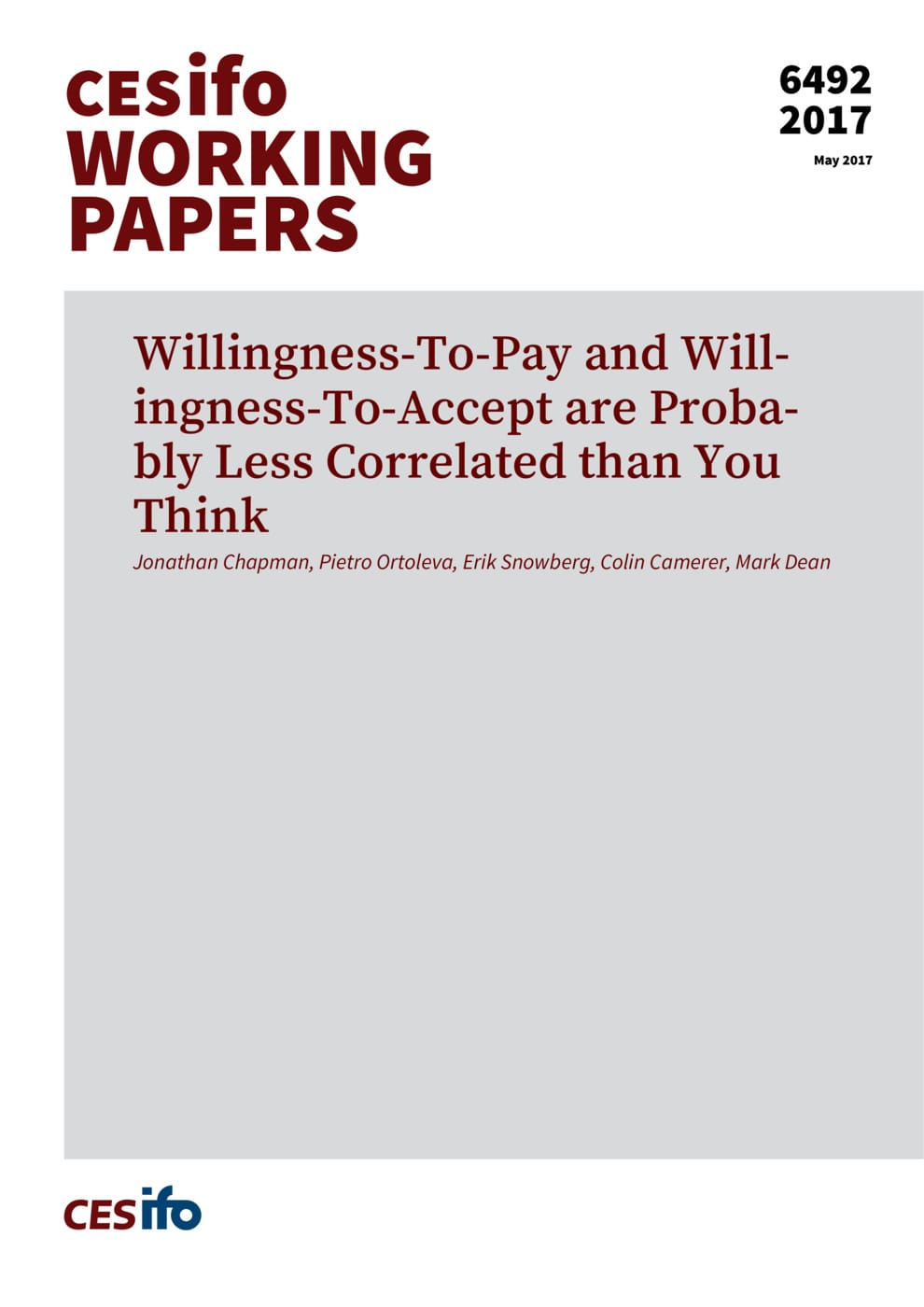Willingness-To-Pay and Willingness-To-Accept are Probably Less Correlated than You Think
CESifo, Munich, 2017
CESifo Working Paper No. 6492

Willingness to pay (WTP) and willingness to accept (WTA) a monetary amount for a lottery should be closely related. In data from an incentivized survey of a representative sample of 3,000 U.S. adults, we find that WTA and WTP for a lottery are, at best, weakly correlated. Across all respondents, the correlation is slightly negative. For the subgroups that we examine, the correlation is almost always small, typically statistically insignificant, and often negative. The exception is respondents who score highly on a within-study IQ test, where the correlation is around 0.2. A meta-study of similar lab experiments with university students also shows a correlation of around 0.15-0.2. While poorly related to each other, our measures of WTA and WTP are strongly related to different measures of risk aversion, and relatively stable across time. These various patterns allow us to show that this lack of relationship between WTA and WTP is compatible with existing theories, such as Prospect Theory and Stochastic Reference Dependence, only under very specific, and unlikely, correlational structures between parameters. We suggest a simpler formalization.
Behavioural Economics
Fiscal Policy, Macroeconomics and Growth